Modern Rodding TECH
InTheGarageMedia.com

 Photography by Jon Hall & Dave Autin
Photography by Jon Hall & Dave Autinon Hall is the founder of Shadow Rods, a company that makes the XL27 body. This body has the basic shape of a ’27 Ford roadster but has been subtly enlarged to give more interior space and is tailored to fit perfectly on a ’32 Ford frame.
Hall recently finished a personal roadster project that features some unique modifications. It was a very strong contender for the America’s Most Beautiful Roadster award at the Grand National Roadster Show in Pomona, California. In this article, we’ll take an in-depth look at how the perfectly proportioned roll pan was made for the rear of the body.
The bottom edge of this body is completely flat, which provides a nice mounting surface for the roll pan. The center body pieces are bolted together on the rear of this body, just like the original Ford body was, and there is a crisp parting line next to the bead at the edge of the decklid. Jon wanted to continue this parting line down into the roll pan to give the design continuity; a lot of work went into fabricating the parts in such a way that the edges fit together with precision, mimicking the look of factory parts.
When making sheetmetal parts that bolt together, usually each part has a flange at 90 degrees to the face, and the fasteners go through these flanges. While it is possible to weld flanges directly to the edges of a panel, there are problems with doing it that way. Welding almost always causes distortion, and it’s very difficult to resolve the distortion when the weld is on a corner. If you look carefully at how this roll pan was designed, you’ll see that many of the flanges were created by bending them on a brake. This can only be done on flat panels, so you will see that on some of the critical edges of the roll pan, like the ones on the curved panels below the rear panel of the body, flat pieces of 19-gauge metal had flanges shaped over specially made hammerforms, creating a flange about 1/2-inch wide. These short flanges were then butt-welded to the edges of the panels. This puts the weld in a place where it can be worked with a hammer and dolly and it leaves a nice, uniform edge on the corner where the flange meets the face of the panel.
It can be challenging to make a roll pan with adequate stiffness, since they often attach only on the upper edge. Jon’s crew built a very clever bulkhead that spans the pan near the center, which strengthens the entire structure.
It takes an exceptional team to build a car like this. Jon Hall, Dave Autin, Randy Norton, Ashley Root, and Cliff Samual did the majority of the work at Shadow Rods.
If you examine the photos, you’ll see a lot of details showing excellent design coupled with masterful execution. This is just the combination you’d expect to see on a rod competing for top awards at major car shows.

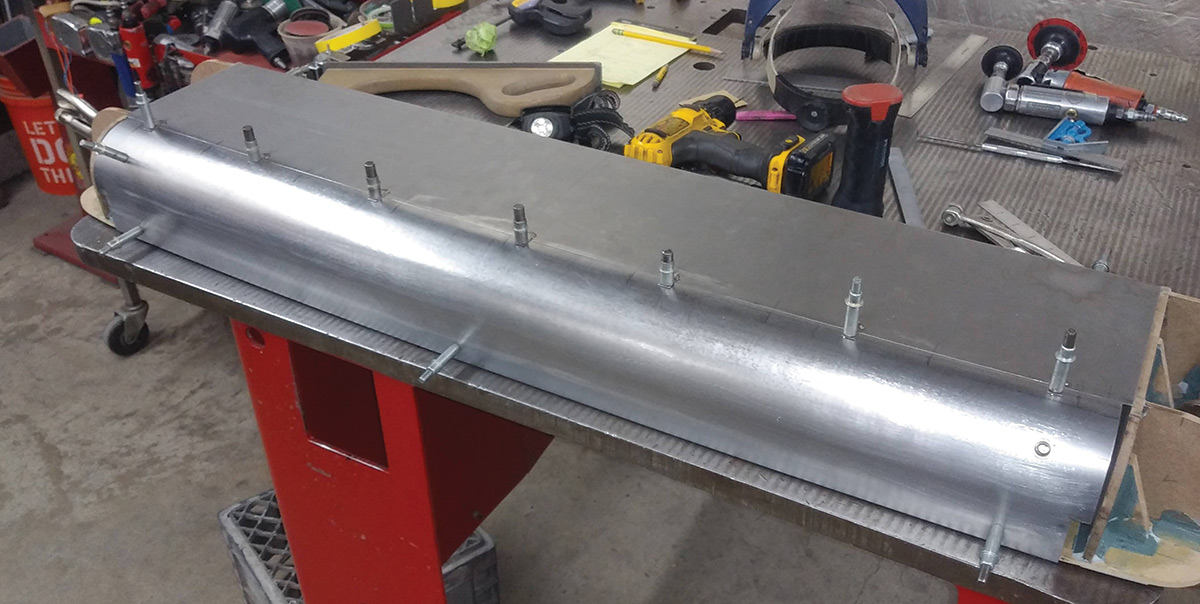
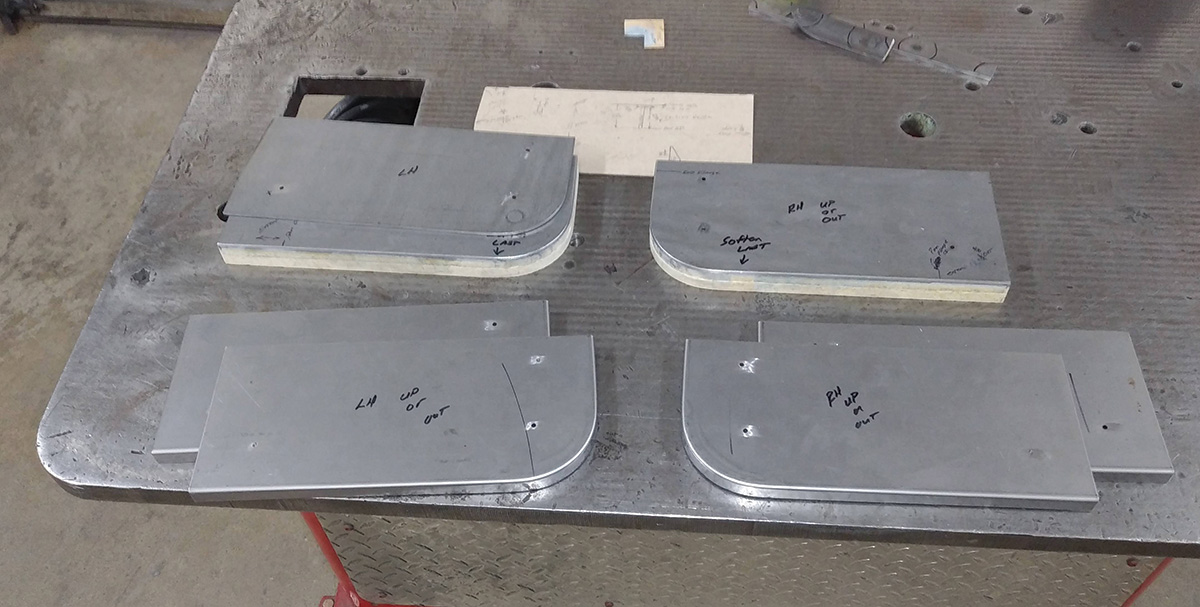
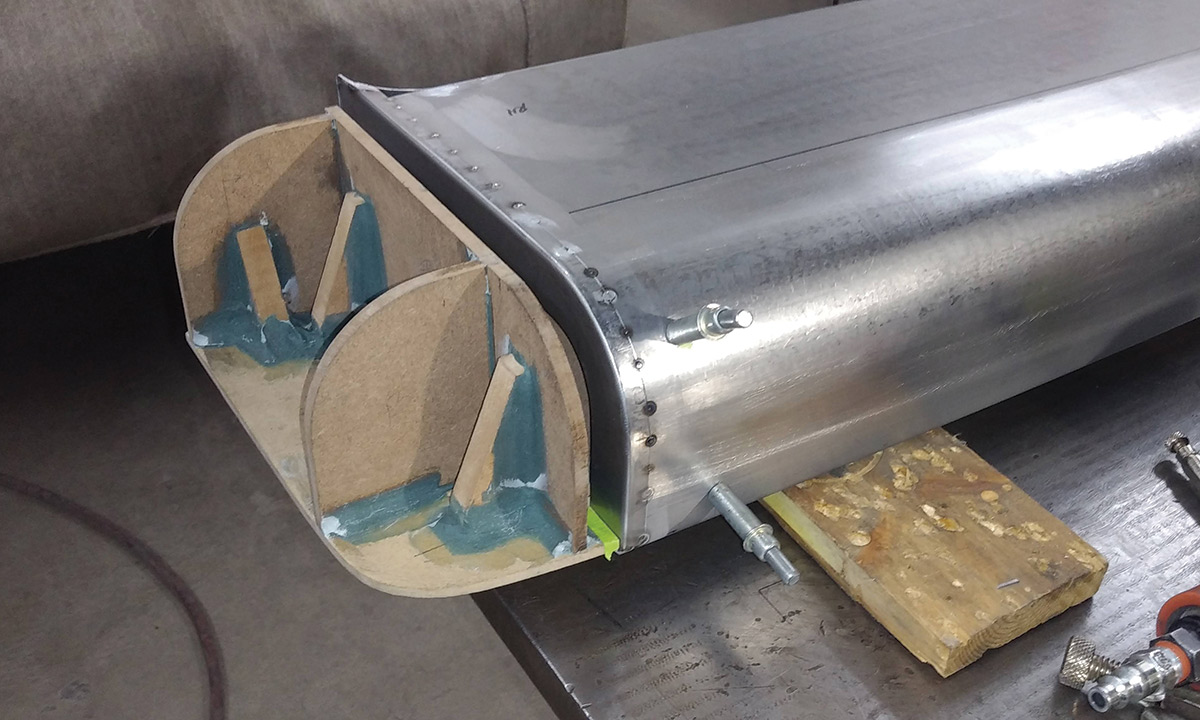


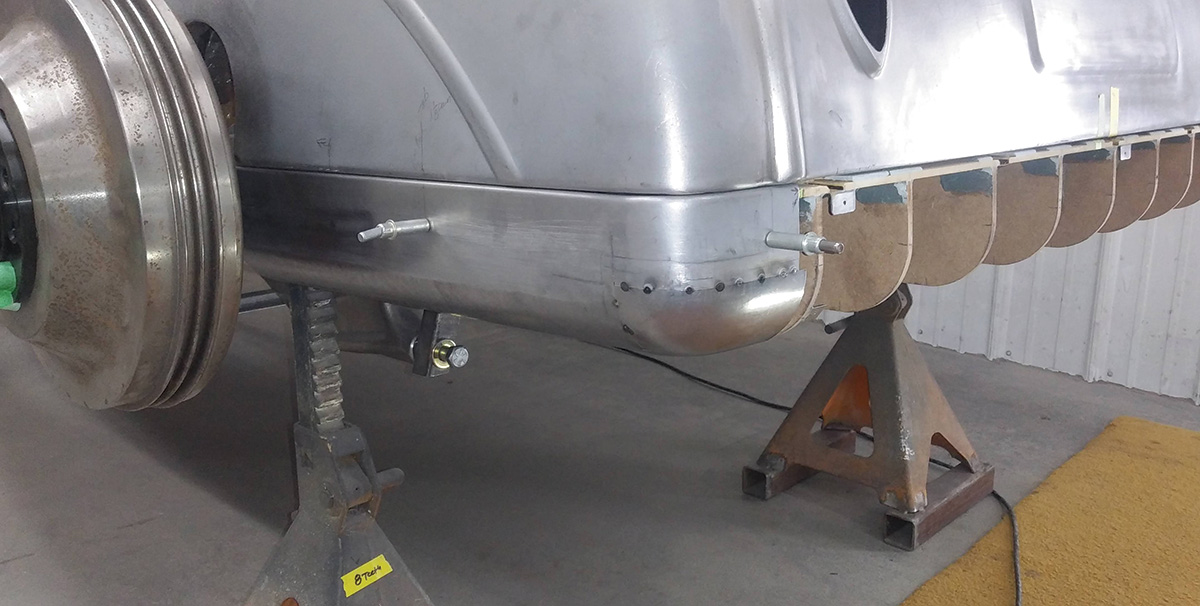
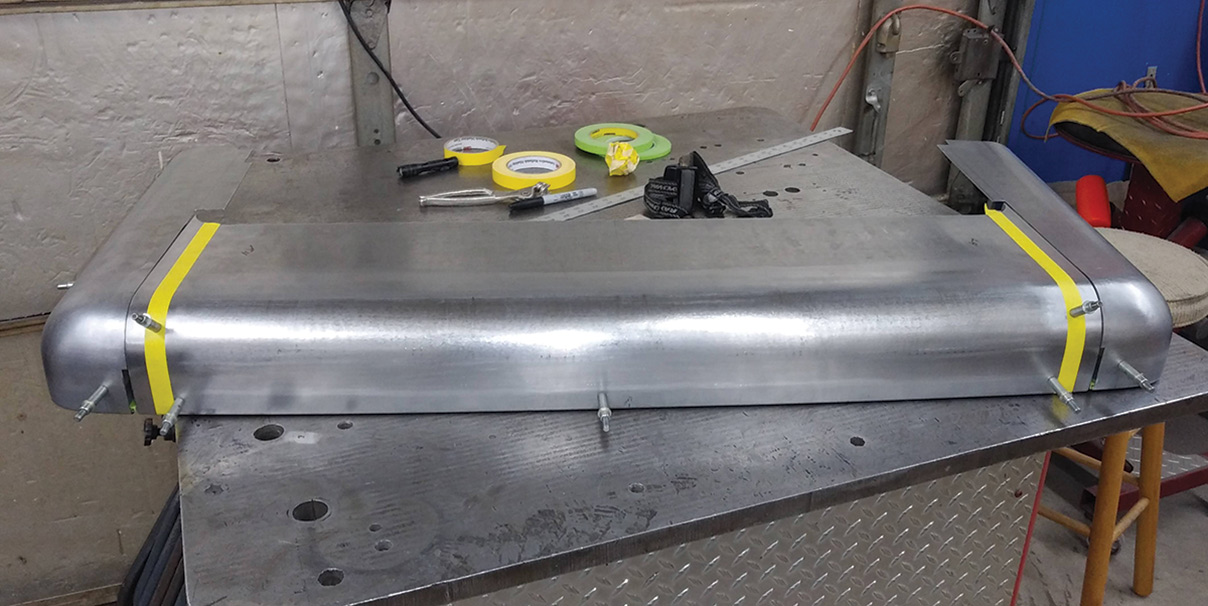
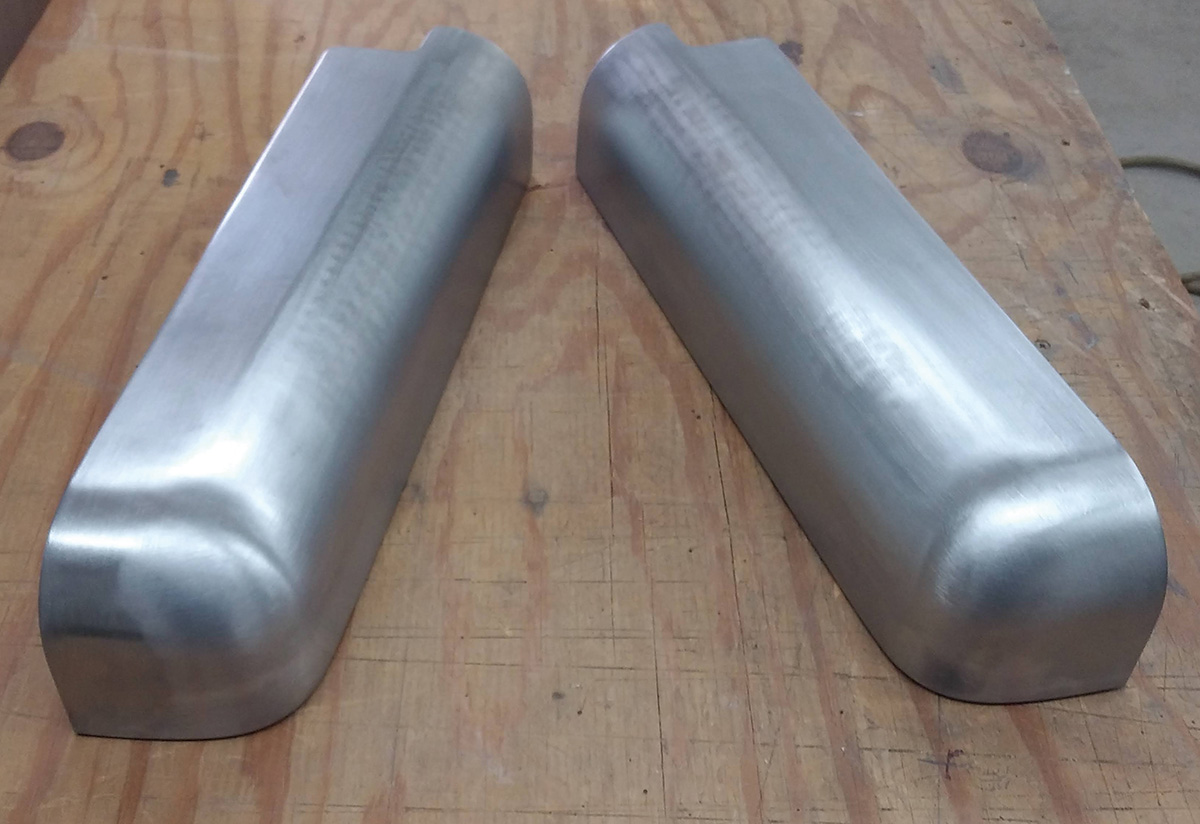
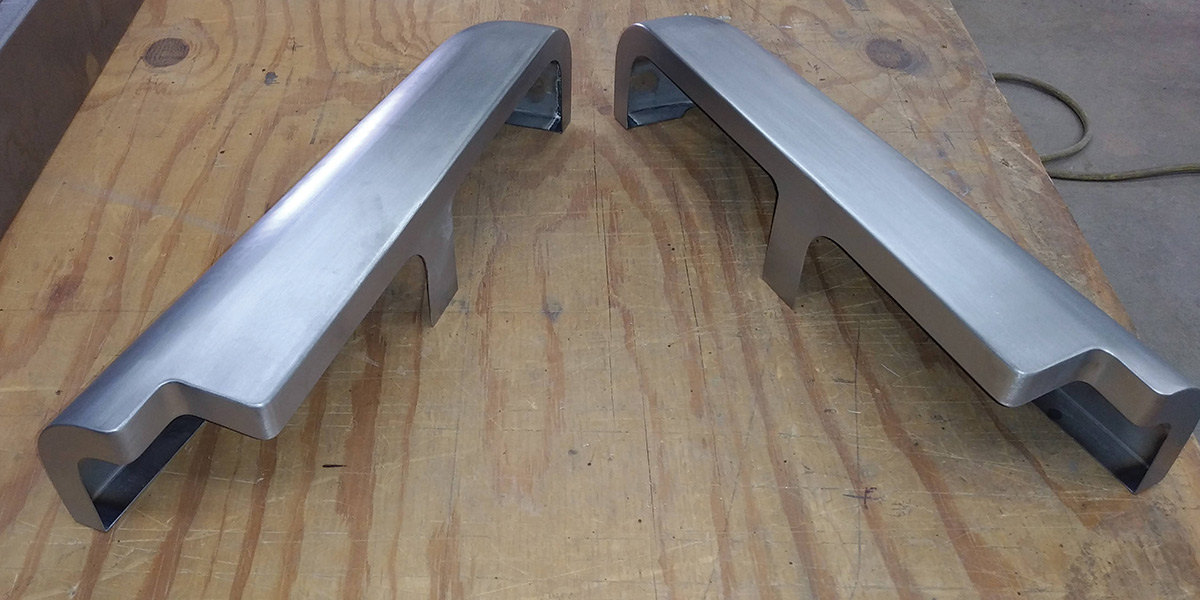



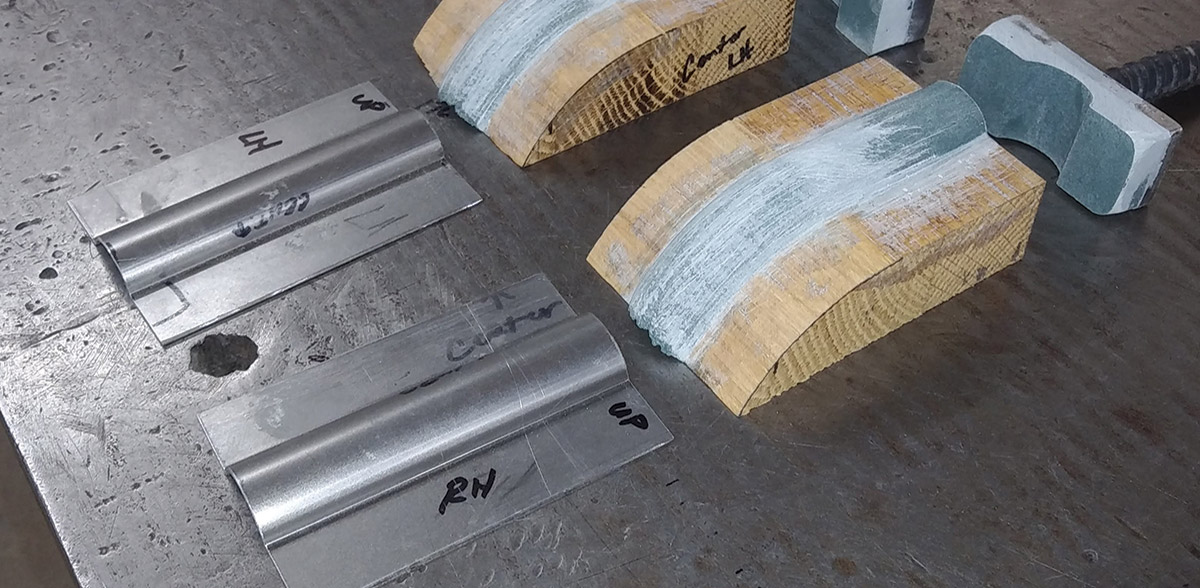

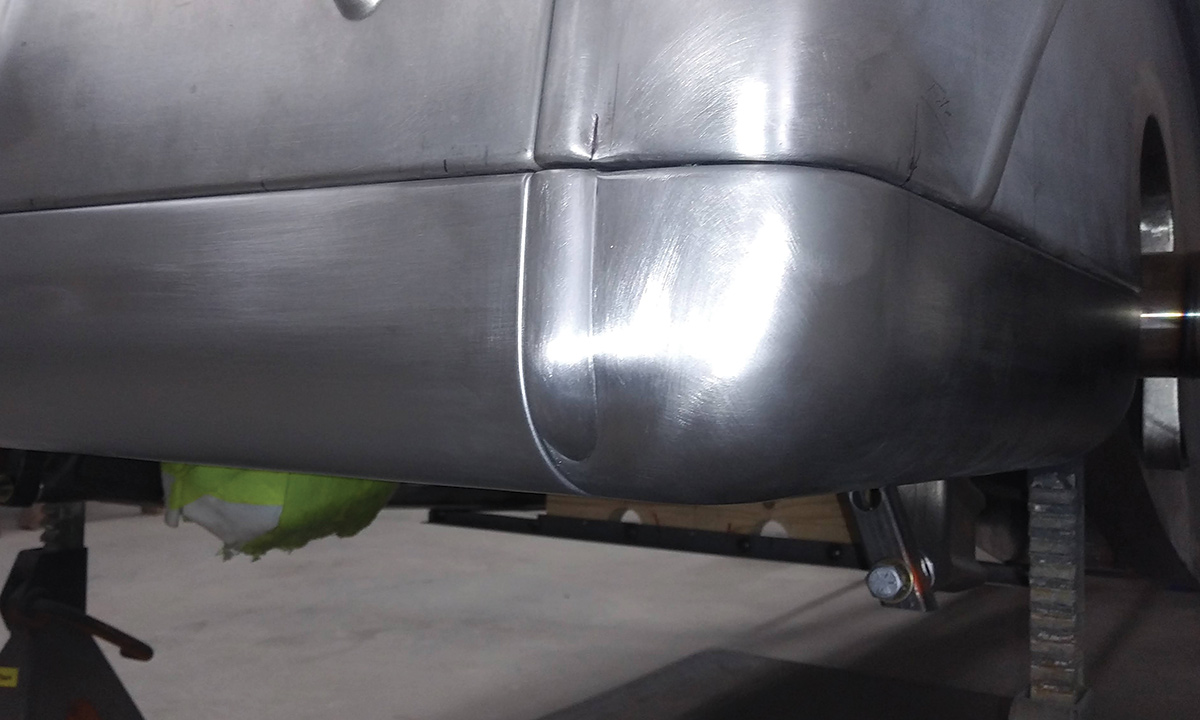

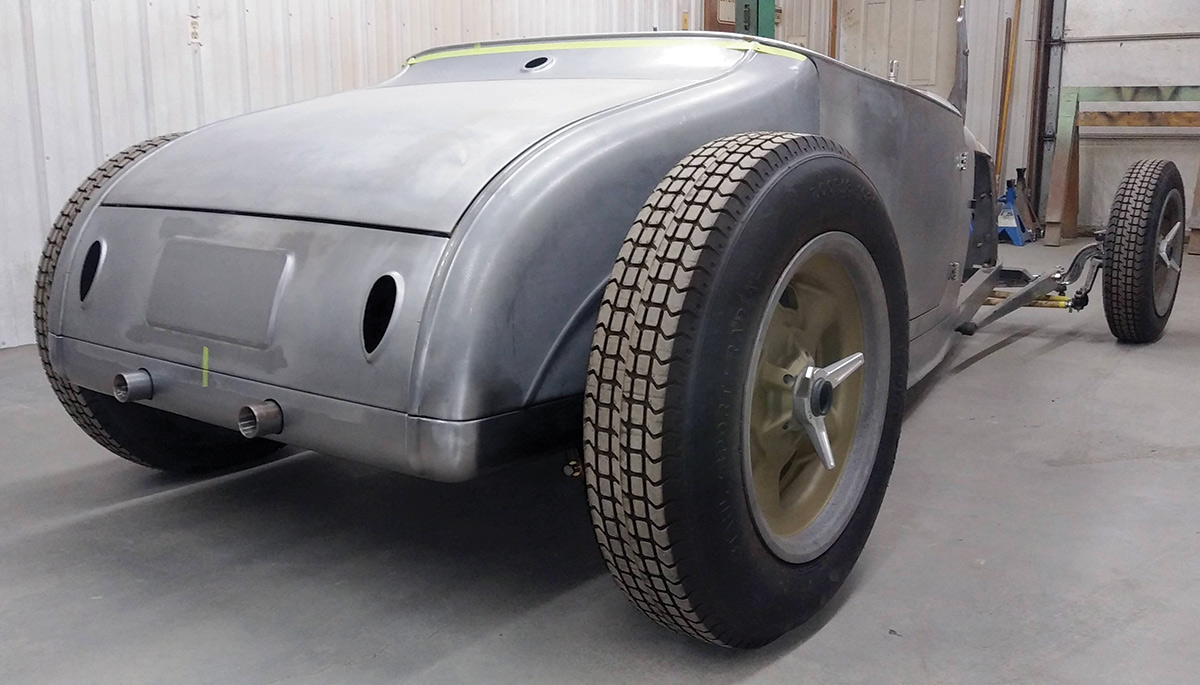
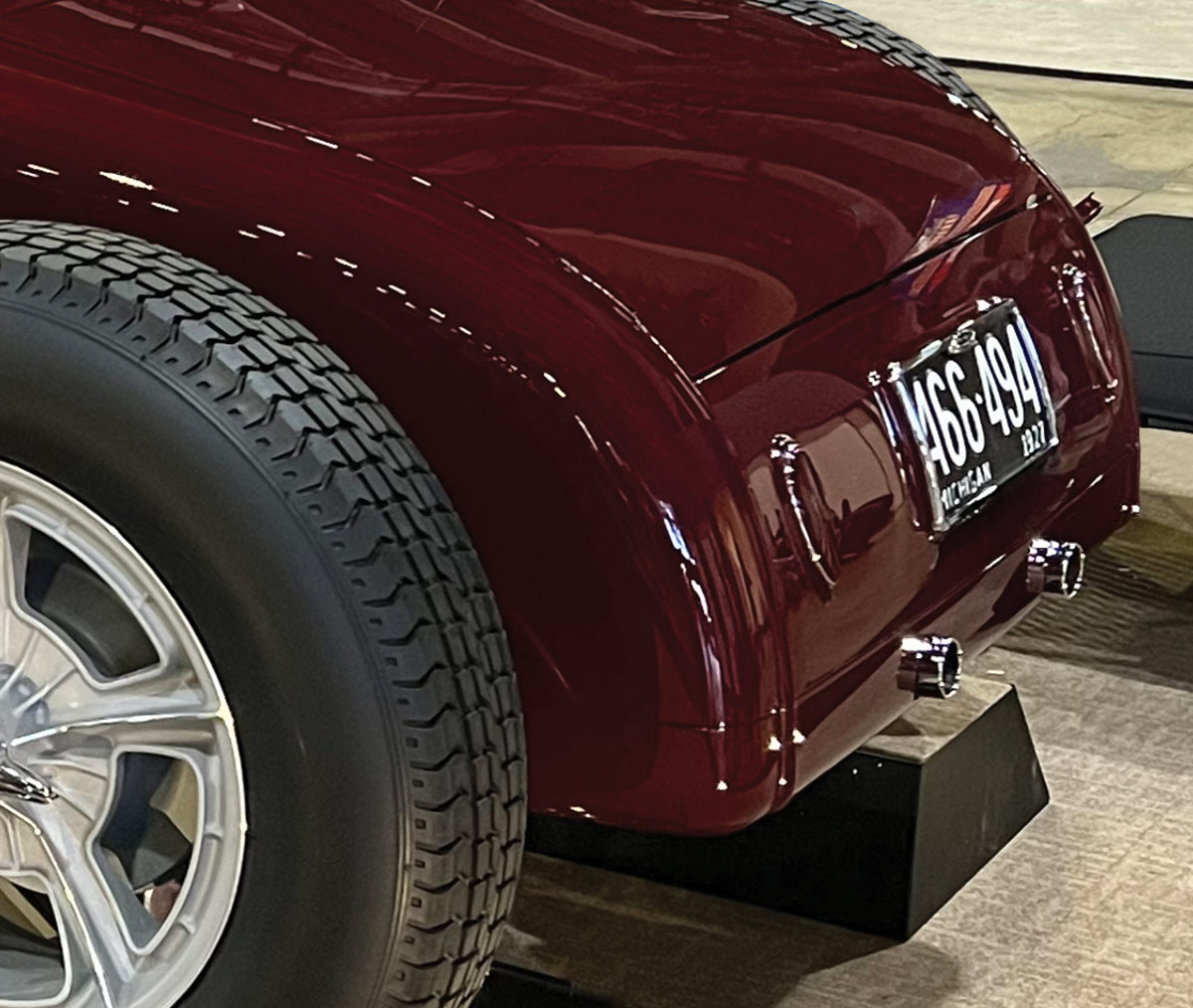
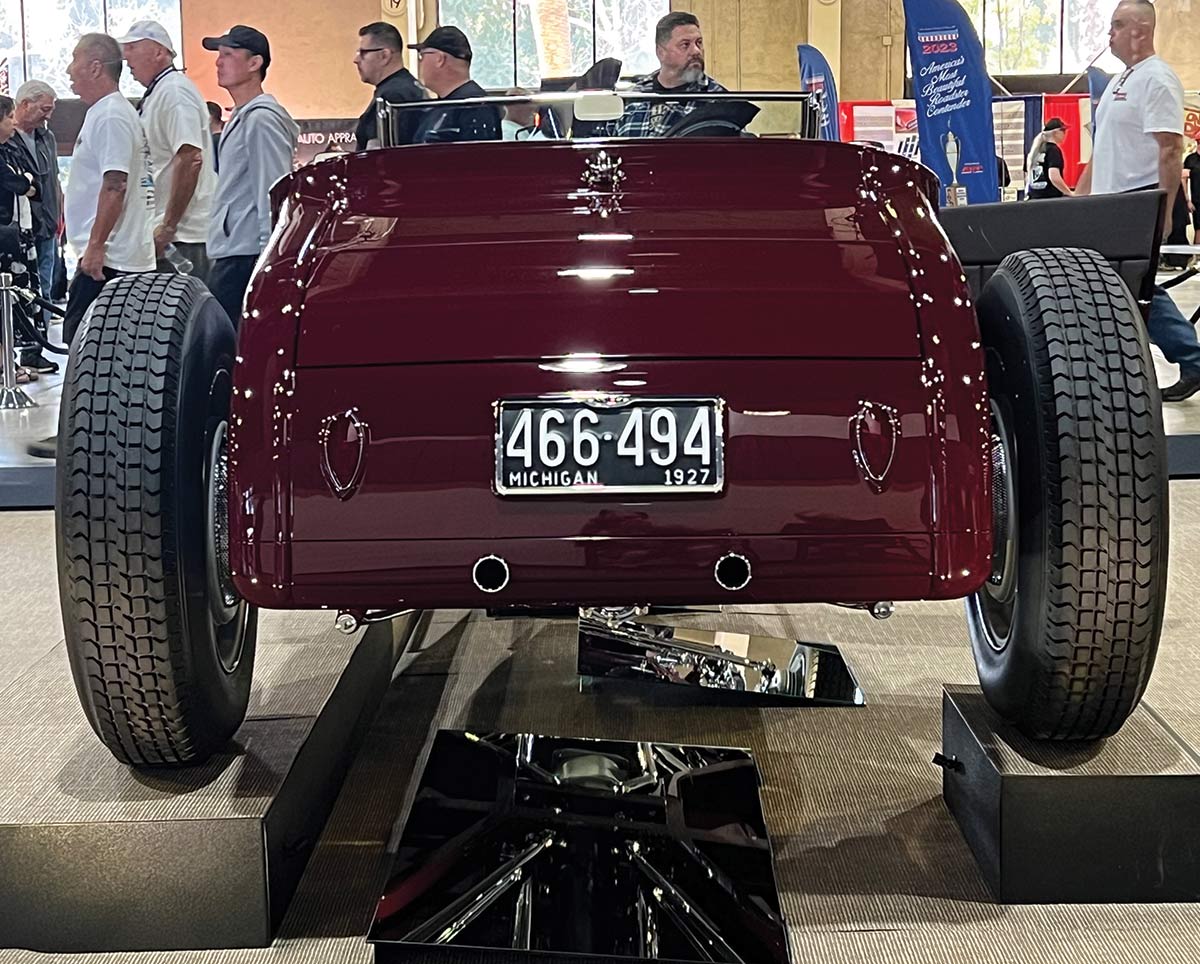

VOLUME 4 • ISSUE 33 • 2023